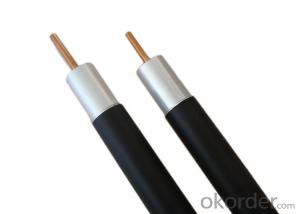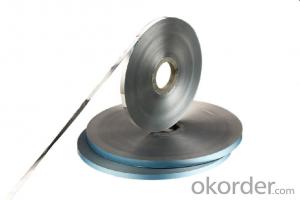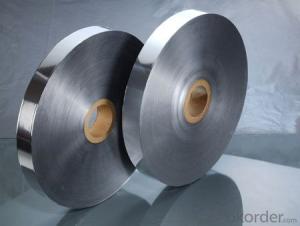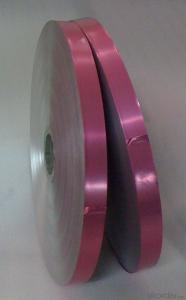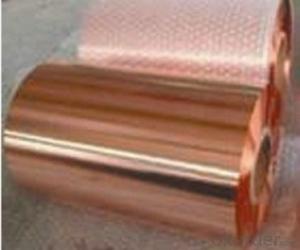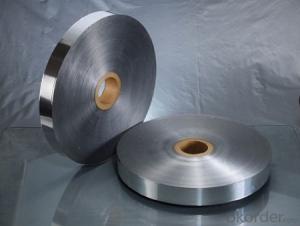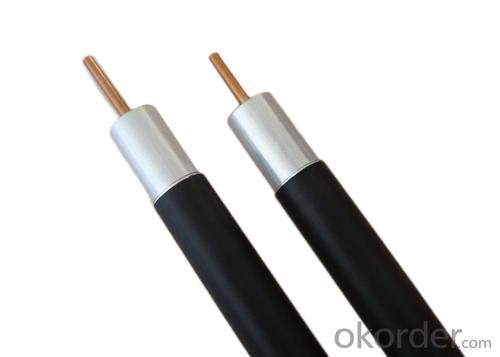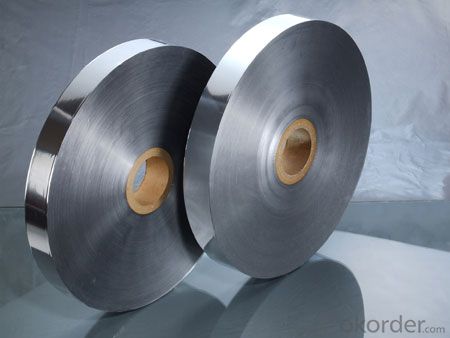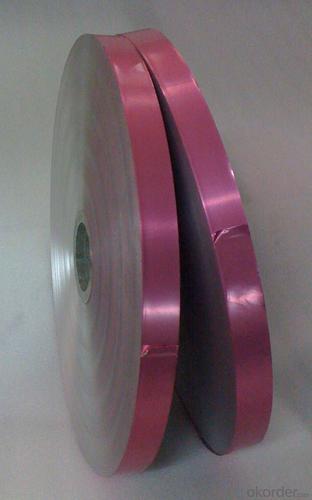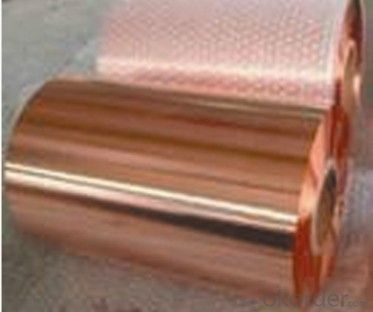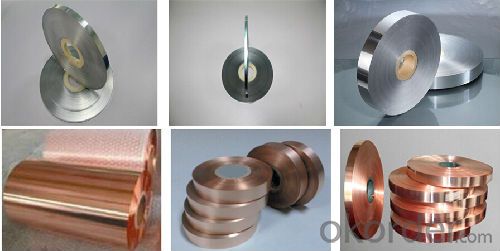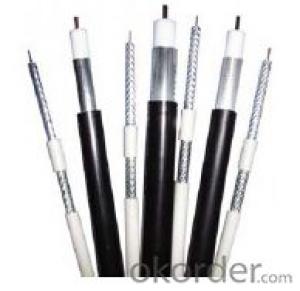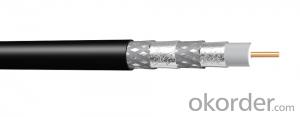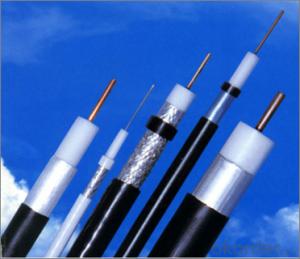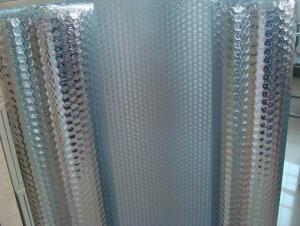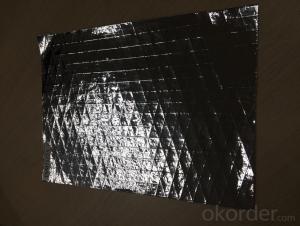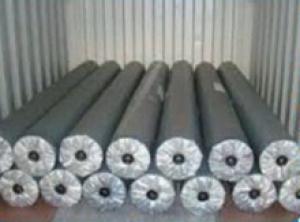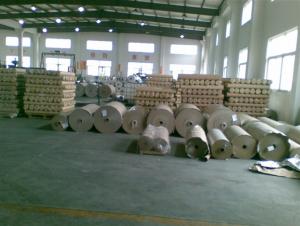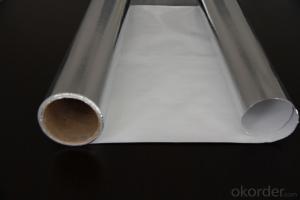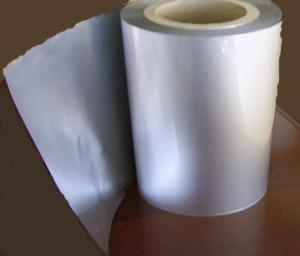Aluminum Foil Facing Heat Shield Insulation Bubble Foil Thermal Shield Foil
- Loading Port:
- Shanghai
- Payment Terms:
- TT or LC
- Min Order Qty:
- 1000 m²
- Supply Capability:
- 1000000 m²/month
OKorder Service Pledge
OKorder Financial Service
You Might Also Like
Aluminum Mylar foil Shielding Foil for Coaxial Cable communication cable
1.Structure of Aluminum Mylar foil Shielding Foil Description:
Electrical cable is used to transfer electricity, information and the realization of electromagnetic energy transformation. The electrical cable in a broad term mainly indicates to cable and in a narrow term indicate insulation material. Its definition is the aggregation of different parts below: one or more insulation cores, the wrapping layers of the cores, the general protective layers and the outer protective layers. Cables also include additive conductor without insulator.
2.Main Features of the Aluminum Mylar foil Shielding Foil:
Aluminum Mylar foil Shielding Foil is applicable to the shielding of coaxial cable, local network wire, electronic communication cable and computer peripheral wire etc.
1.Thickness: min 6.5mic; width: 300-1000mm.
2. According to GB/T 3198-2010.
3.Usages: cable shield, candy wrap
3. Aluminum Mylar foil Shielding Foil Images
4. Aluminum Mylar foil Shielding Foil Specification
AL-PET laminated foil
Description: Apply for overall or individual twisted pair shield for electronic cable and local network cables, protect from external electromagnetic interference. Features option of LUBRITAPE apply to decrease 50% friction of aluminum surface.
Construction: Aluminum foil, Polyester film
CODE | TOTAL THICKNESS | ALU THICKNESS | GLUE | POLYESTER FILM | WEIGHT |
FP007012 | 22±3 | 7 | 3 | 12 | 38.8±5% |
FP010012 | 25±3 | 10 | 3 | 12 | 46.9±5% |
FP020020 | 43±3 | 20 | 3 | 20 | 83.8±5% |
FP025012 | 40±3 | 25 | 3 | 12 | 87.6±5% |
Special specifications are also available, according to customer’s order. | |||||
AL-PET-AL laminated foil
Description: resilient shielding in cable assembling and provide the enhanced shielding required in harsh environments.
Construction: Aluminum foil +Polyester film+ Aluminum foil
CODE | TOTAL THICKNESS | ALU THICKNESS | GLUE | POLYESTER FILM | GLUE | ALU THICKNESS | WEIGHT |
DFP007015 | 35±3 | 7 | 3 | 15 | 3 | 7 | 65±5% |
DFP009020 | 39±4 | 9 | 3 | 15 | 3 | 9 | 76±5% |
DFP015025 | 61±5 | 15 | 3 | 25 | 3 | 15 | 115±5% |
DFP025025 | 80±5 | 25 | 3 | 25 | 3 | 25 | 175±5% |
Special specifications are also available, according to customer’s order. | |||||||
Bonded AL-PET laminated foil
Description: A laminated aluminum-polyester-aluminum tape is fully bonded to the foam dielectric to provide 100% coverage, longitudinally applied over the polyethylene core and the tape minimizes signal leakage.
Construction: Aluminum foil + Polyester film + Aluminum foil + EMAA film
CODE | TOTAL THICKNESS | ALU THICKNESS | GLUE | POLYESTER FILM | GLUE | ALU THICKNESS | GLUE | EMAA | WEIGHT |
DFPH009012 | 65±5 | 9 | 3 | 12 | 3 | 9 | 3 | 25 | 98±5% |
DFPH009020 | 72±5 | 9 | 3 | 20 | 3 | 9 | 3 | 25 | 108±5% |
DFPH009025 | 75±5 | 9 | 3 | 25 | 3 | 9 | 3 | 25 | 114±5% |
DFPH010025 | 84±5 | 10 | 3 | 25 | 3 | 10 | 3 | 25 | 126±5% |
Special specifications are also available, according to customer’s order. | |||||||||
Copper polyester foil
Description: Copper foil, copper lamination foil typically use as shielding for low/medium voltage cable and radio frequency coaxial cable. The rolled annealing copper foil is flexible to wrap cable core, also it has the excellent physical properties, Polyester film provides electrical insulation and high mechanical properties.
Construction: Copper foil + Polyester film
CODE | TOTAL THICKNESS | CU THICKNESS | GLUE | POLYESTER FILM | WEIGHT |
CP018012 | 33±3 | 18 | 3 | 12 | 175±10% |
CP007020 | 46±3 | 18 | 3 | 25 | 195±10% |
CP015012 | 30±3 | 15 | 3 | 12 | 160±10% |
Special specifications are also available, according to customer’s order. | |||||
5.FAQ
We have organized several common questions for our clients,may help you sincerely:
① Where you used this foil?
Aluminum Mylar foil Shielding Foil is used for cable shield, candy wrap for the shielding of coaxial cable, local network wire, electronic communication cable and computer peripheral wire etc.
②How to guarantee the quality of the products?
We have established the international advanced quality management system,every link from raw material to final product we have strict quality test;We resolutely put an end to unqualified products flowing into the market. At the same time, we will provide necessary follow-up service assurance.
③How long can we receive the product after purchase?
In the purchase of product within three working days, We will arrange the factory delivery as soon as possible. The pecific time of receiving is related to the state and position of customers.Commonly 7 to 10 working days can be served.
- Q: Is it possible to use aluminum foil facing to cook a fried egg?
- <p>Yes, you can use aluminum foil facing to make a fried egg. Place a piece of aluminum foil on a flat surface and lightly grease it. Crack the egg into the center of the foil, season as desired, and fold the foil over the egg to create a sealed pouch. Heat a non-stick pan over medium heat and place the foil pouch inside. Cook for about 3-4 minutes on each side or until the egg is cooked to your liking. Be cautious when opening the foil as steam will escape. This method is a creative alternative for cooking eggs without using a traditional pan.</p>
- Q: Explain the differences between food wrap and aluminum foil facing in a few sentences.
- <p>Food wrap, also known as plastic wrap, is a thin, flexible plastic film used to cover and preserve food, keeping it fresh and protected from contaminants. It's typically clingy and transparent, allowing you to see the food inside. Aluminum foil facing, on the other hand, is a type of laminate that has a layer of aluminum foil bonded to a plastic film. This facing is used for various purposes, including increasing the barrier properties of the plastic, providing a shiny appearance, and enhancing the product's durability. It's often used in packaging to protect and preserve food items, but it's not as clingy or transparent as food wrap and is not meant for direct contact with food in the same way.</p>
- Q: What are the potential health hazards related to using paper plates in comparison to aluminum foil facing?
- <p>There are generally no significant health risks associated with using paper plates instead of aluminum foil facing. Paper plates are made from food-grade materials and are designed to be safe for contact with food. However, it's important to ensure that the paper plates are free from any harmful chemicals or dyes, and are not contaminated during production or storage. Aluminum foil facing, when used properly, is also safe, but it can leach aluminum into food if heated excessively or used with acidic foods. Both options are generally considered safe, but it's always best to use products from reputable manufacturers and follow usage guidelines.</p>
- Q: What are the types of food that should not be cooked with aluminum foil facing?
- <p>There are certain types of food that should not be cooked with aluminum foil facing. Acidic foods, such as tomatoes and citrus fruits, can react with the aluminum and potentially release harmful compounds. Foods high in salt or spices can also cause a reaction with the aluminum, leading to the leaching of aluminum into the food. Additionally, cooking acidic foods at high temperatures can increase the risk of aluminum contamination. It's best to avoid wrapping these types of foods in aluminum foil when cooking, or to use the dull side of the foil facing away from the food.</p>
- Q: What are the potential health hazards linked to cooking with aluminum foil?
- <p>Cooking with aluminum foil is generally considered safe, but there are some potential health risks. Aluminum can leach into food, especially when it comes into contact with acidic or salty foods at high temperatures. This could lead to increased aluminum intake, which has been linked to neurological disorders like Alzheimer's disease, although more research is needed to establish a definitive link. Additionally, aluminum foil can cause burns or injuries if not handled properly. It's important to use foil responsibly, avoiding direct contact with food when possible, and to follow proper food safety guidelines.</p>
- Q: Is it possible to use materials other than plastic for food wrapping?
- <p>Yes, you can use alternatives to plastic for food wrapping. Materials such as beeswax wraps, silicone sheets, and reusable cotton or linen wraps are eco-friendly options that can be used to cover bowls or wrap food items. These materials are reusable, washable, and can be composted at the end of their life cycle, reducing waste and environmental impact. Additionally, parchment paper and aluminum foil can be used as disposable alternatives, though they are not as sustainable as reusable options.</p>
- Q: This question asks about the various types of aluminum foil facing that can be found in the market.
- <p>Aluminum foil facing is commonly used in construction for insulation and moisture protection. The different types available on the market include: 1) Plain Foil Facing, which is a simple, smooth aluminum surface; 2) Embossed Foil Facing, featuring a textured pattern for added strength; 3) Reinforced Foil Facing, which incorporates additional materials for enhanced durability; 4) Coated Foil Facing, where the aluminum is coated with other substances to improve performance; and 5) Laminated Foil Facing, which combines aluminum with other materials for specific applications. Each type serves different purposes and has unique properties that cater to various construction and industrial needs.</p>
- Q: Is it safe to use old aluminum foil facing as a container for leftovers or dry goods?
- <p>While aluminum foil facing can be used as a temporary solution for storing leftovers or dry goods, it is not recommended for long-term storage. Aluminum foil facing may contain chemicals or coatings that are not food-safe, and it can also react with acidic or alkaline foods, potentially leaching harmful substances. For safe and long-lasting storage, it is best to use containers specifically designed for food storage, such as glass or food-grade plastic containers with airtight seals.</p>
- Q: Is it possible to use aluminum foil facing as a wrap for lunch boxes?
- <p>Yes, you can use aluminum foil facing to make a wrap for lunch boxes. Aluminum foil is a versatile material that is commonly used for food packaging due to its ability to keep food fresh and protected. It's lightweight, easy to use, and can be wrapped around food items to keep them insulated and prevent spills. However, it's important to ensure that the foil is food-grade and clean before use to maintain food safety.</p>
- Q: This question asks for the proper cleaning method for aluminum foil facing after it has been used.
- <p>To clean aluminum foil facing after use, first let it cool down to avoid burns. Then, gently scrape off any food residue with a plastic scraper or the edge of a credit card. Avoid using metal scrapers as they can scratch the surface. Wipe the surface with a damp cloth and mild dish soap to remove any grease or grime. Rinse with warm water and dry thoroughly. For stubborn stains, you can use a mixture of baking soda and water to create a paste, apply it to the stain, let it sit for a few minutes, then scrub gently and rinse. Always check the manufacturer's instructions for any specific care requirements.</p>
Send your message to us
Aluminum Foil Facing Heat Shield Insulation Bubble Foil Thermal Shield Foil
- Loading Port:
- Shanghai
- Payment Terms:
- TT or LC
- Min Order Qty:
- 1000 m²
- Supply Capability:
- 1000000 m²/month
OKorder Service Pledge
OKorder Financial Service
Similar products
Hot products
Hot Searches
Related keywords
